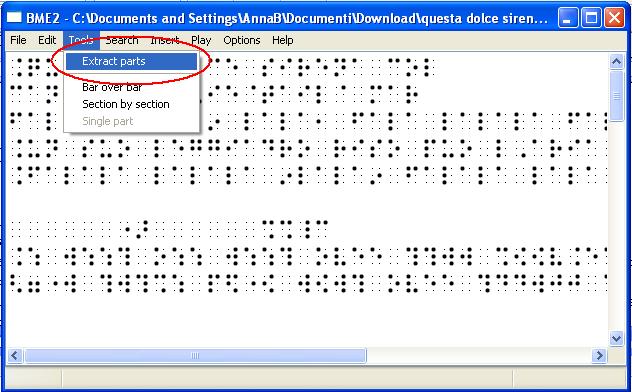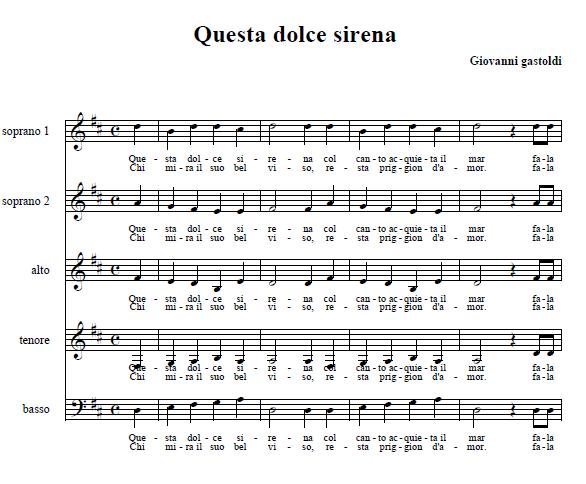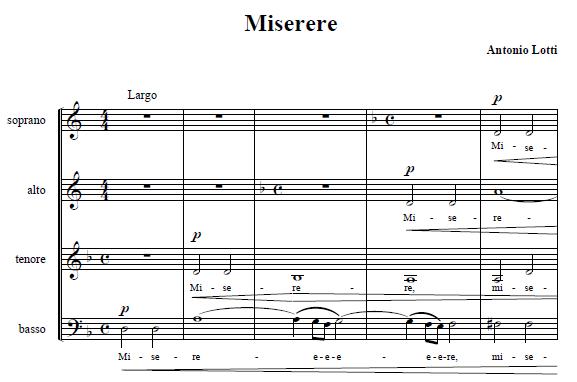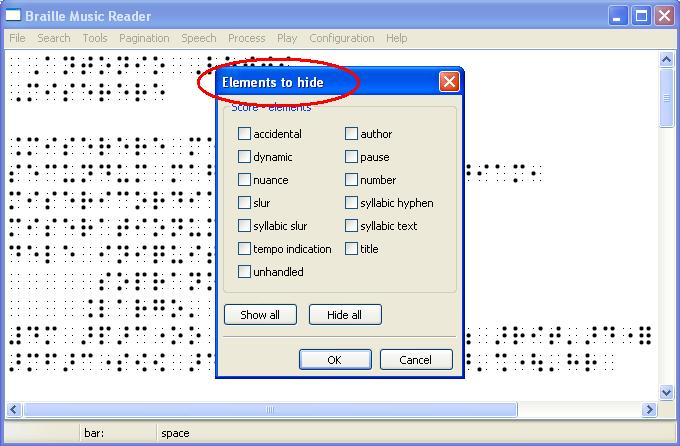Everything that has been said so far about the ways a blind person can use BME2 for teaching and/or studying vocal music is also true for choral singing. Participation in a choir is the kind of music activity which can bring a lot of joy and satisfaction, and BME2 can definitely make it more accessible.
It is essential for every blind chorister to be provided with necessary materials: both the score and lyrics and it is the Braille Music Editor that provides this opportunity as it allows one to prepare the scores both in the electronic form and as Braille printouts, which was already discussed in the previous units.
The outline of a choral singing lesson or rehearsal will be very similar to those presented in unit 1 and 2, so there is no need to repeat it. However, it is worthwhile to indicate the items of particular importance for multi-voice choral music. Here they are:
-
Having at our disposal a BMML file containing a choral piece we have a chance to extract each individual part from the score. To take advantage of this it is necessary to select "Extract part" function in the "Tools" menu and check the part(s) required. In this way we can have separate parts (each in a new window), which will facilitate practising individual voices or voice combinations, e.g. soprano and alto, soprano and tenor, tenor and bass.

- Some choristers will request to be given the whole score, others will find it easier to study just the part they sing. The BMML format makes it possible to prepare the notes as needed.
- It is useful to know that with the "Midi Player" function we can reproduce the tune with or without metronome. Both options can be applied adequately.
- The tempo can also be adjusted as required.
Example 3 contains a graceful Italian madrigal "Questa dolce sirena" by Giovanni Gastoldi, from 16th / 17th century ((here the link to MusicXml format)).

Although as many as five voices sing in the choir: 2 sopranos, alto, tenor and bass, it is not a difficult piece to sing, because the lyrics are the same for all the voices and all the voices sing simultaneously. What should be paid attention to is a few instances of singing two syllables on one note, the phenomenon rather frequent in Italian vocal music. In such a case writing lyrics in Braille requires the use of syllabic parenthesis (left dots 2,3,6 and right 3,5,6) to contain the syllables sung on one note.
BME2 also made it possible to insert two verses of lyrics above the notes (each verse has to be inserted in a separate window under "Lyrics") and thus pressing F11 with the cursor on a given note we can hear the two syllables: the one from the first and the other from the second verse, to be sung on that note.
Polyphony proves to be more difficult in choral singing. Example 4 (here the linkto MusicXml format) "Miserere" by A. Lotti. from the very beginning of the piece implies a necessity to count the breaks by particular voices and to enter at appropriate time.

In this kind of music it will be very important to practise each part separately and in combination with any other part. If any chorister finds it difficult, the BMML version will help them practise at home and the result will be the same as if they were practising in a group.
Since there are a lot of nuances (particularly dynamics) in the score it may be convenient "to hide" them (the option provided by BMR) until the tune has been memorized and then to recover them to get detailed information about the execution.

If the choir master is blind, the BMML file will prove very useful and facilitate his/her work, making it possible to trace the tune of each part and study their mutual relations.
Blind people can successfully participate in the choir, whether the choir of the blind or integrated with sighted colleagues. There seem to be fewer and fewer choirs of the blind nowadays. The reason is probably an insufficient number of candidates who live in the same area as well as a lack of potential leaders of choirs of the blind. So it happens in different countries that singing groups of the blind work at a distance and only seldom come from different regions to gather together and have rehearsals. The results of such activities cannot be very good, especially because the preparation of Braille resources in a traditional way requires a great amount of time and money. Hopefully, the availability of BMML vocal music will help improve this situation.
On the other hand, singing in the integrated choirs is becoming more and more popular among the blind and, providing they are supplied with the necessary tools, may prove quite easy and satisfactory for both parties. It is also here that BME2 (or BMR) will be a useful tool, if a blind chorister will get the BMML files required.
